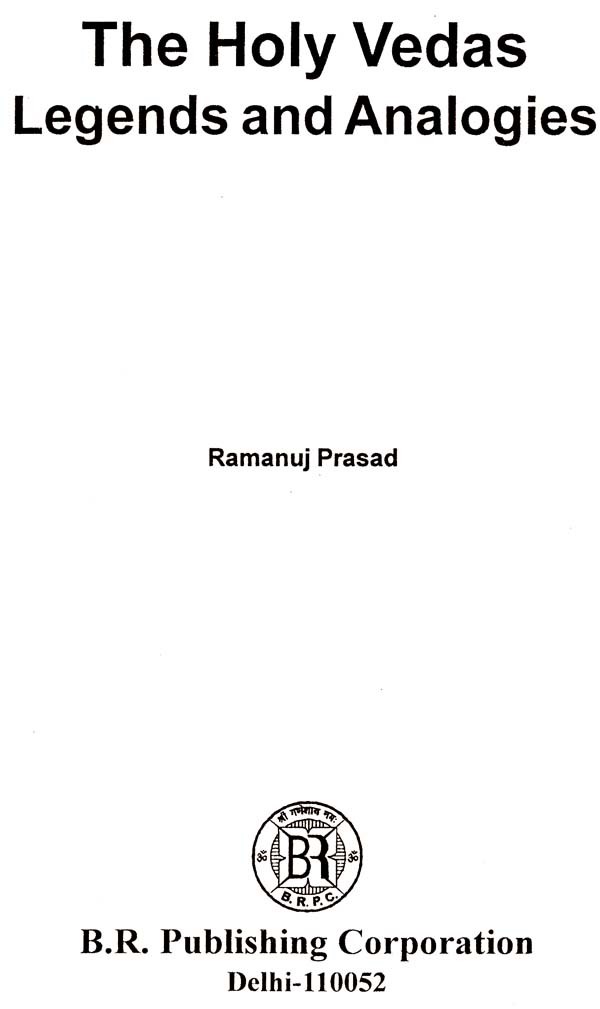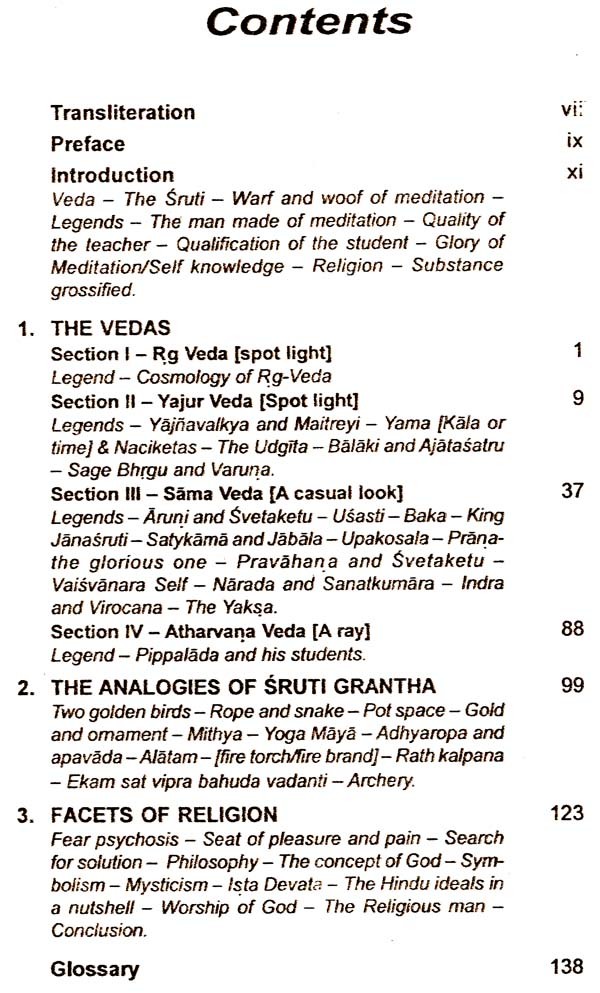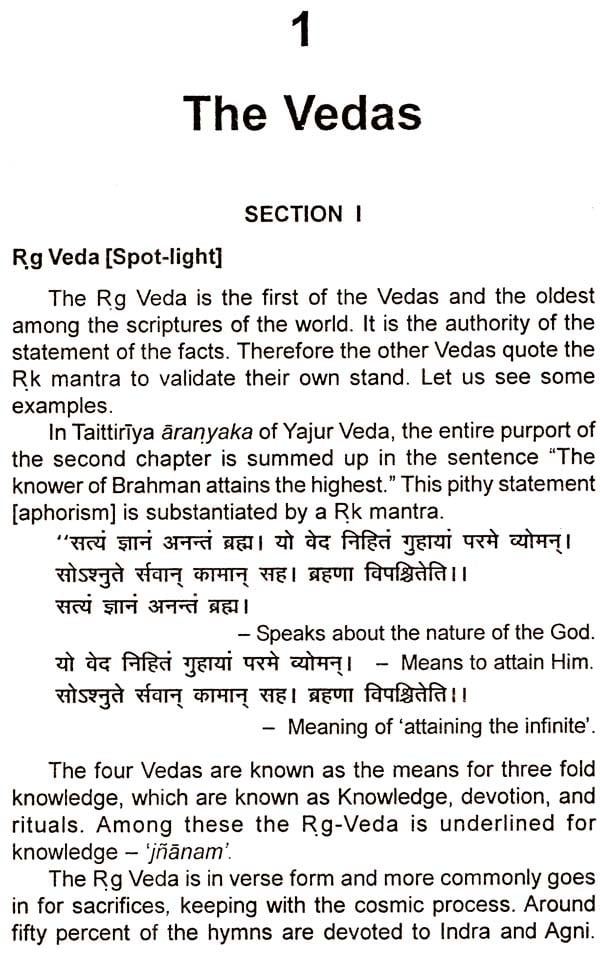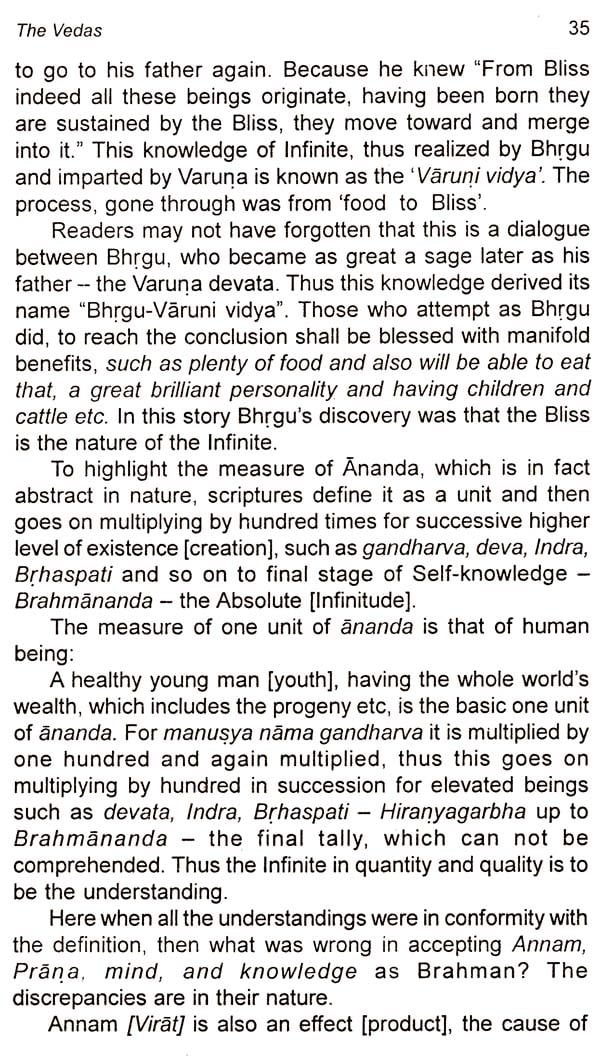
Holy Vedas- Legends and Analogies
Book Specification
| Item Code: | AZE628 |
| Author: | Ramanuj Prasad |
| Publisher: | B.R. Publishing Corporation |
| Language: | ENGLISH |
| Edition: | 2011 |
| ISBN: | 9788176467407 |
| Pages: | 152 |
| Cover: | HARDCOVER |
| Other Details | 9.00x6.00 |
| Weight | 330 gm |
Book Description
Has authored number of books on Hindu religion and philosophy, published by Pustak Mahal. He happens to be a writer of technical papers in professional journals and articles in news papers and journals. The author is a blessed academician in the disciplines of Engineering, Economics and Management. Is a retired, from a public sector industry after putting up his best for about forty years as an ecevutive.
The second is the set up that gives the inference of the values of the teachings through the length and breadth of the exemplary characters in the legends. These legends are not the part of Pauranic values, but of the Śruti. In fact it is like Upanishad, which is the highest religion, simplified for the benefit of the common readers. The legends reveal objective and subjective meditation [upasana]. Šri Krsna calls it by the name 'abhyasa-yoga' - the mental exercise - the Yoga of union.
"With the mind not wandering after anything else, made steadfast in the Yoga of constant practice, he who meditates on the Supreme, Resplendent Purusha, reaches Him O Partha". By meditating on these accounts, one becomes eligible for krama-mukti [Liberation in stages], as the Upasana combined with karma-yoga affords passage to Brahma-loka, through sukla-gati, and then there one has to gain the knowledge for liberation as prescribed by the scriptures.
The author is indebted to Mr. G. Ramamurthy, for his assistance in bringing out this volume, expected to be one of immense value to the common man, who has faith and devotion in our scriptures that were revealed to the sages and then by the sages to the sages, thus to us by our immediate teacher in tradition.
These seers were not limited to any particular group, class or clan but even house-holders and kings were included and such kings were known as 'Rājaṛṣīs'. Occasionally misunderstanding cropped up about the authorship of Vedas to the great seer, Veda Vyäsa as the word 'Veda' has been pre-fixed to his name. Vyāsācārya has only arranged the divisions of Veda into four groups namely Rg, Yajur, Sāmā, and Atharva Veda, according to the characteristics of the mantras, but he was not the author. The Vedas were there before him.
The essence of the Vedas or the crystallized philosophy is the Upanishads. Study of the Upanishads without the assistance of a competent teacher is difficult, rather it will be misleading. Therefore it is not open to common platform.
**Contents and Sample Pages**











